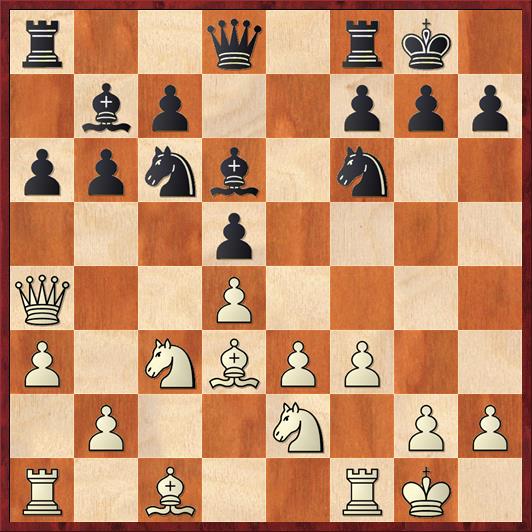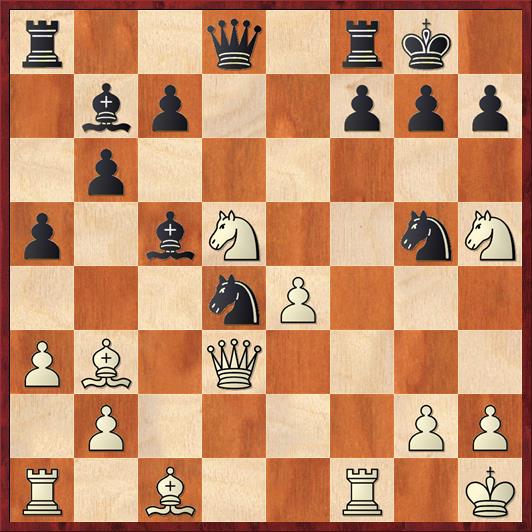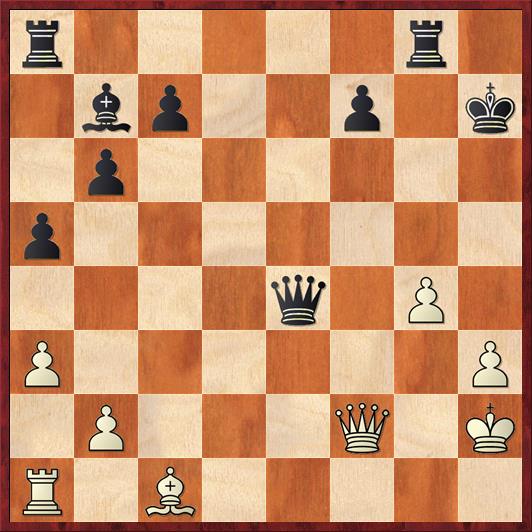In 1978, I was an exchange student for a semester in what was then called the Soviet Union, studying Russian language at what was then called Leningrad State University in the city then known as Leningrad. One of my biggest goals for the semester was to participate in a chess tournament. I didn’t even know how to go about doing it. Could you find a list of tournaments somewhere and just mail in an entry fee, as in the United States?
The answer to that question turned out to be no. As far as I could tell, there was no such thing as a “weekend Swiss” or any kind of open-participation tournament. But I was in luck. Everyone wants to help a foreign exchange student, and that’s just as true in Russia as anywhere else. I asked around at the local chess clubs, and the director of one of them invited me to play in the quarterfinal round of the club championship.
Just like a grandmaster tournament, the Burevestnik club tournament was a round robin, 16 players, 15 games, invitation only, and no entry fee. Everybody in my round robin was a category I or candidate master player. Just stop and think about that for a moment. This is a quarter-final. So that means the club had at least sixty-four players at strong class-A level (I would estimate Russian category-I players to be at least 1900 strength by American standards).
My one regret about playing in this tournament was that I probably took the place of someone who had qualified for it fair and square. I never asked whose place I took. The only thing I could do was try to put in a good showing, both for the honor of American chess and to justify being allowed to play in the tournament.
It was a long shot, because I was at that point a class-A player by American standards, and probably therefore a weak category I player by Russian standards. My opponents would be eight candidate masters and seven category I players. In the first round I was paired against one of the CM’s, whose name was Trubenkov.
Have you ever thought what it would be like to play in a foreign country for the first time, where you are the mysterious stranger that nobody knows? I think that the best first-game-in-a-foreign-land story of all time was Edward Lasker’s. In 1912, having just gotten off the boat in London, he played an informal game against the champion of the London Chess Club, George Thomas, and produced one of the most famous games in chess history. (See it here.) He sacrificed his queen on move 11 to set up a king hunt that ended with a checkmate by his king (18. Kd2 mate!)
My game against Trubenkov… wasn’t like that. It did feature two piece sacrifices and a startling ending, though.
 Position after 11. … Bd6. White to move.
Position after 11. … Bd6. White to move.
FEN: r2q1rk1/1bp2ppp/ppnb1n2/3p4/Q2P4/P1NBPP2/1P2N1PP/R1B2RK1 w – – 0 12
This position, which came out of a Nimzo-Indian Defense, is where the game first started to get weird. You have to understand that as a class-A player, I had no strategic understanding of chess at all. None. I was all about tactics and attack and kill the other guy’s king. In this position, the obvious and right thing to do is finish developing with 12. Bd2. White’s pawn position is a little bit fragile, and the last thing that White needs to do is to start opening lines when he’s behind in development.
However, my style back then was attack first and ask questions later, so I played 12. e4?! After my opponent’s reply, 12. … de, I could still have stayed in the game with 13. Nxe4, when the knight prevents the trick Black played in the game. However, I played instead 13. fe?, after which Black simply won a pawn with 13. … Nxd4! The point, of course, is that 14. Nxd4 would walk into a pin after 14. … Bc5. If I defend the knight with, say, 15. Ne2, then 15. … b5 chases the queen away and wins the piece.
Instead I played 14. Nf4, but after 14. … Ng4 15. Qd1 Ne5 Black was completely in control. To borrow a phrase I’ve seen elsewhere, he has “the pawn and the compensation.” That is, his piece activity is as good as if he had sacrificed a pawn, yet he is actually a pawn ahead.
A few moves later, things got even weirder, and it was all my fault.
 Position after 22. Qd3. Black to move.
Position after 22. Qd3. Black to move.
FEN: r2q1rk1/1bp2ppp/1p6/p1bN2nN/3nP3/PB1Q4/1P4PP/R1B2R1K b – – 0 22
Some strange knight moves have occurred, but Black is still way ahead and plays the natural 22. … Nxb3.
I don’t remember my exact thought process here, but I imagine it was something like this: “Look, if I just take back on b3 I’m going to get squashed. This is my one chance to make a little bit of trouble for my opponent.” So instead I played the totally unsound piece sacrifice, 23. Nhf6+?!?
Who knows, maybe I even mis-analyzed and thought that after 23. … gf 24. Nxf6+ Kh8 I could take on g5, only to realize when we got to this position that my queen is en prise. So instead I had to swallow my pride and take on b3, 25. Qxb3. It’s either that or resign, and somehow I never quite got around to resigning in this game.
Black has only one move but it’s a good one, 25. … Nxe4, and now instead of the pawn and the compensation, he has the piece and the compensation.
So what does White do now? Well, if I trade knights I have no attack any more, so what the hell, I might as well sacrifice the second knight: 26. Nxh7?!?
This game is a ghastly perversion of everything that Soviet chess is supposed to be about, calm and methodical and sound and ruthless. My play is exactly the opposite: desperate, improvised, unsound and … ruthful? Hmm, I’m not quite sure what the opposite of “ruthless” is. In spite of all this, I have to take a certain perverse pleasure in the way I played. I absolutely refused to be discouraged and everything I did was designed to open up Black’s king to attack, even if it should have been too little, too late.
For a few moves, my opponent continued to play in crushing fashion: 26. … Qd4! (threatening smothered mate) 27. h3 Nf2+ 28. Kh2 Kxh7?
Okay, well, I have to give that move a question mark because Rybka says that Black forces mate after 28. … Bd6+! 29. g3 Qe4. It’s really not too hard to calculate. But still, who can turn down a free knight?
29. Qc2+ Qe4 30. Rxf2 Bxf2 31. Qxf2 …
In spite of the odds I’ve made a little progress. Instead of being two pieces down, I’m only a rook down. Woo hoo!
31. … Rg8 32. g4 …
And now the most unbelievable, ridiculous thing happens.
 Position after 32. g4. Black to move.
Position after 32. g4. Black to move.
FEN: r5r1/1bp2p1k/1p6/p7/4q1P1/P6P/1P3Q1K/R1B5 b – – 0 32
Of course Black should simply play 32. … Qh1+. It chases White’s king out into the open, and incidentally to a square where it gets in the way of White’s queen. After 32. … Qh1+ 33. Kg3 Rg7, defending the f-pawn, Black can continue his methodical buildup.
But my opponent was in serious time trouble. He didn’t want to play even one defensive move; he wanted to checkmate me. And so he plays according to the normally sound principle of “invite all the pieces to the party.”
32. … Rae8???
One of the most stunning reversals I’ve ever seen over a chessboard. Black goes from a 7-pawn advantage (according to Rybka) to being checkmated in two moves.
33. Qh4+ Kg7 34. Qh6 mate.
How about that? I should have developed my QB on move 12. Instead I kept it on c1 for the whole game. Turns out that I didn’t need to move it after all!
I’m not sure what you can learn from such a game, except the importance of having a positive attitude. Even in the worst of positions, ask yourself: how could I possibly, conceivably, cause some trouble for my opponent?
Here’s what I wrote about the game in my diary afterwards: “All evening, for some reason, I was in an optimistic frame of mind. From stupidity or blindness I lost a pawn in the opening. But my opponent began to ponder a long time, and I made the game as complicated as possible. He got into serious time trouble. Although he could easily have obtained a won endgame, he played for an attack and fell into checkmate. As one spectator put it, ‘And out popped a mate.'”
So that’s my first-game-abroad story. Not exactly Edward Lasker caliber, but pretty memorable nevertheless. Do any of my readers have stories they would like to share about their first time playing chess in another country?



{ 9 comments… read them below or add one }
Was the Burevestnik club in the Vasilievsky island? That’s the school that produced GM Yemelin and Lugovoy, and Gata Kamsky grew from a regular CM to the GM caliber.
Anyways, Category I Leningrad player of 1978 is about Expert level, about 2100 USCF at least.
As of the game, if I were in the serious time trouble at move 32, I’d probably play 32… Qg2+, everything to get the queens off the board. Extra exchange is sufficient to win in the endgame, and it ensures safe reaching of move 40.
I totally agree, 31. … Qxg2+ would have been such an easy win. I think that, besides being in time trouble, he was just too proud — I had played so badly, he wanted a checkmate and didn’t want to have to play an endgame. He got a checkmate, all right — the wrong way!
The Burevestnik club where I played was downtown, I think only a couple blocks away from the central chess club (the Chigorin Chess Club, a beautiful chess palace that I hope is still there). I wish it had been on Vasilievsky Island — that’s where my dormitory was!
Oh, then the LSU club on Vasilievsky Island might’ve been built later. I played there in 1987. I am still in touch with Mr. Alexander Kentler who has been its director. I haven’t an idea about the clubs in 1978, because I was only born in 1975. I went to the Pioneer’s Palace at Nevsky & Fontanka between 1980 and 1990.
Chigorin Chess Club is still there, as I heard, in excellent shape, holding the annual Chigorin memorials, including one right these days.
OMG! Yes, I met Alexander Kentler. He was the director of the Leningrad State University club in 1978, and I went to a couple of chess classes or training sessions that he led. I only went to one or two before my schedule got too busy, but I was very impressed — everything was so organized and the pace was very quick. He probably was the one who told me about the Burevestnik club.
I don’t know if he would remember me or not, but if so he would remember my name as Dana Nance. I changed my name to Mackenzie several years later.
Kentler runs the website e3e5.com which is the default source of a Russian-language newswire, although he does publish a few blog entries too, mostly on the subject of chess history. He and Vadim Faibisovich (who was my coach between 1987 and 1990 – Vyacheslav Shishmaryov, Sakaev’s mentor, was the one beforehand) have just published a book on Viktor Korchnoi’s life in Leningrad.
You’re bringing back all the memories! Now that you mention the Pioneer’s Palace at Nevsky and Fontanka, I feel almost certain that is where the Burevestnik club met, in the basement. It just sounds so familiar. Admittedly that’s a little bit more than a couple blocks away from the Chigorin club, but it’s still in the same general area.
So amazing to think that if I had been there a couple years later, I would have seen you as a five-year-old!
I doubted the club would be in the basement of the Pioneer’s Palace, first, I am not sure there was an accessible habitable basement, second, the chess club was on the 2nd floor, left wing of the corner building, third, adult events were not welcome at the Palace.
I googled it, and the location is now resolved.
The “Burevestnik” club was on the Sofya Perovskaya st., which is now reverted to its pre-revolution name “Malaya Konyushennaya”. The Chigorin club is right next to it on the Zhelyabov st., which is reverted to “Bol’shaya Konyushennaya”.
source: http://chigorin.ru/history.html
When I came to the Kolty Club after 4.5 years in the US, I was completely out of shape, haven’t played for something like eight years (3.5 in Israel and the 4.5 in the US). The run I had since starting playing there was something I couldn’t believe myself – I won five tournaments in a row, including the 2015 Kolty Championship, scored altogether 31.5 pts out of 38 (+28-3=7) including a 12-game winning streak and a 24-game unbeaten streak…
My rating peaked at 2356 at some stage. It was completely undeserving, and the 2016 Kolty Ch. was a partial payback, where it retracted 22 points, and as of now I decided to take a break from the tournament play.
Yes, that’s it for sure. Sofya Perovskaya st. is definitely the right address. And you’ve even explained why I couldn’t find it on the map!